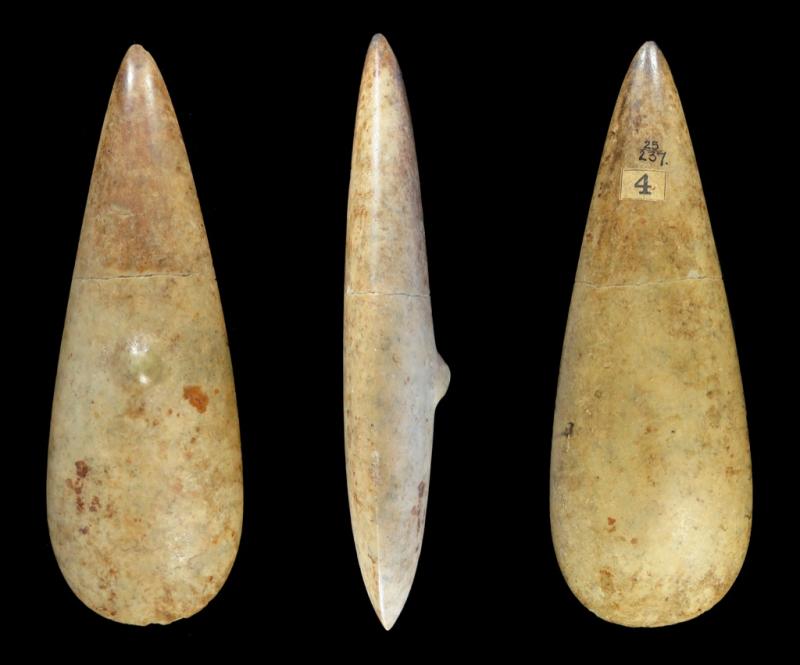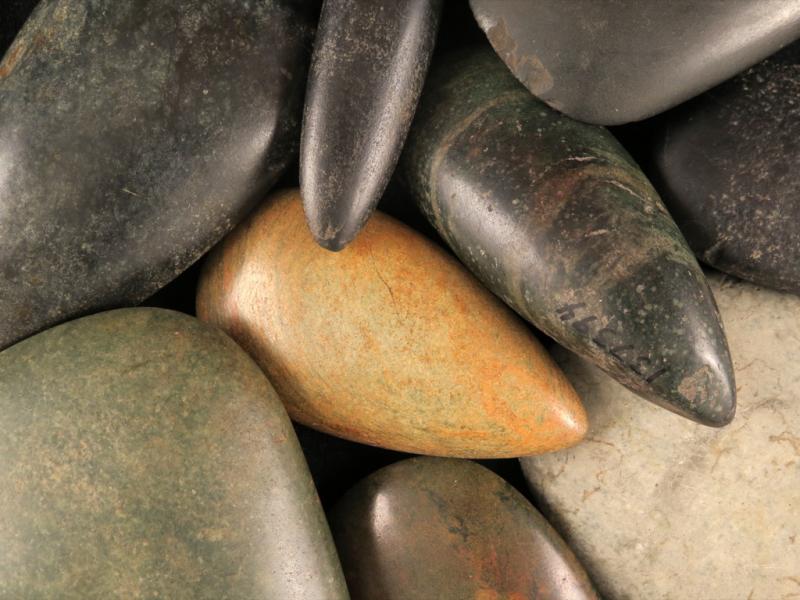
Three views of a jadeitite celt with bulbous protrusion on one face, collected on the Caicos islands before 1878; H: 255mm; W: 85mm; D: 46mm (max). Catalogue no. 25/237, courtesy of the Division of Anthropology, American Museum of Natural History.
Project SIBA (siba [ciba] is the term for ‘stone’ in Classic Taíno dialect) brings together over 300 ‘exotics’ held in eight international museums, the largest study collection of Lucayan stone artefacts ever assembled. Combining a range of studies bridging the arts and sciences (e.g., petrology, iconography) with state-of-the-art, minimally invasive isotope geochemical studies, we aim to explore the wider social, political and economic connections between the archipelago and its wider Caribbean setting.
Research questions include:
- What hard stone materials were imported into The Bahamas/Turks and Caicos Islands and, crucially, from where? Did different Bahama/TCI islands or groups of islands exploit different stone sources? This is key to understanding the extent of exchange networks that connected people across, and potentially beyond, the Caribbean.
- Does a local (Bahama/TCI) style emerge, or do stone artefacts conform stylistically to the original source islands? The curation of finished ‘foreign’ objects suggests a very different underlying social meaning than the re-working of exotic stone into local styles.
- Was there a preference for particular stone materials/artefacts and was this preference based on availability, material properties, function, symbolic value, long-distance ‘exoticness’ or a combination of these?
- Did Bahamian islands with evidence for high status artefacts such as duhos (ceremonial seats), also have a high incidence of imported stone artefacts, and were these artefacts sourced from a specific island (e.g., Hispaniola or Cuba) or more widely? This will inform on socio-cultural developments and inter-island connections.
- Given the difficulty in acquisition of these materials, and their circulation over potentially long distances, can we document re-working (e.g., large celts reduced over time to smaller stubs), or are most in a pristine, un-used state (this goes to the issue of function vs. value)?
Our approach is integrative, spanning style, iconography, provenance and manufacture. The detailed geochemistry and petrology data will provide provenance information, and a context for assessing the wider implications and significance of the artefacts. This study will provide a wealth of new data for Bahamian/TCI imported stone artefacts in museum collections, facilitating a discussion of their meaning to the people who made, traded and valued them.

A group of celts from various Bahamian islands in the Arnold collection at the Peabody Museum of Natural History, New Haven, USA. Courtesy Peabody Museum of Natural History.